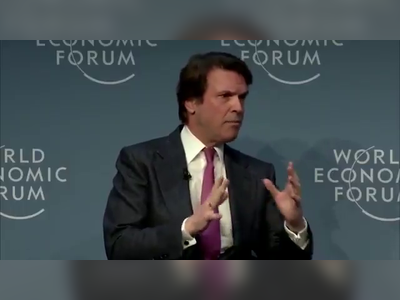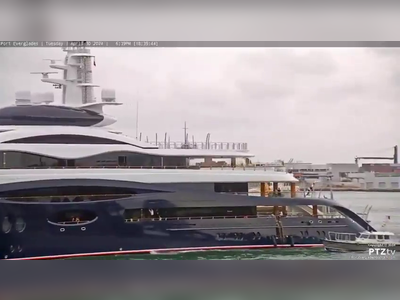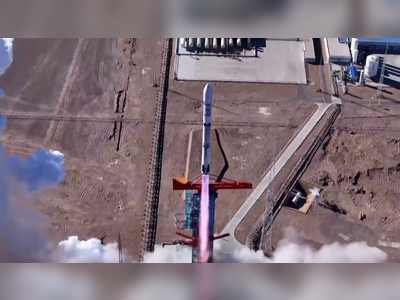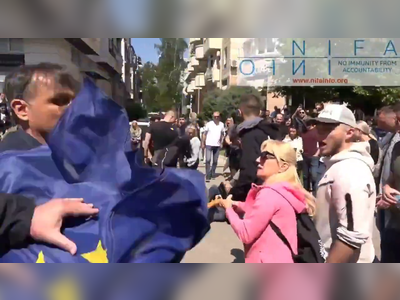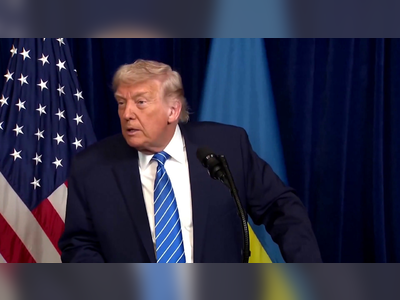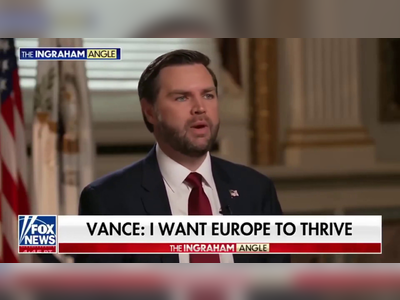Liberty Media Revolutionizes Formula 1, Now Sets Sights on MotoGP
In 2017, Liberty Media took the helm of Formula 1, steering the iconic series into the modern era and significantly expanding its footprint in the United States.
The conglomerate is now poised to replicate this success within the world of MotoGP.
On April 1, in a move that was no April Fool's joke, the Liberty Media Group, owners of Formula 1, announced the acquisition of an 86% stake in Dorna Sports, the organization behind premier motorcycle racing competitions such as MotoGP and the Superbike World Championship. The deal valued Dorna Sports at an impressive 4.2 billion euros ($4.7 billion).
The American media giant, through this transaction, has gained control over the MotoGP's sister series, Moto2 and Moto3, as well as the electric motorcycle racing series MotoE and the women's world championship running alongside Superbike. However, the primary focus is undeniably on MotoGP, with plans to follow a similar blueprint to that of their successful Formula 1 strategy, despite the different challenges presented in the motorcycle racing arena.
A Template for Success, With its Own Set of Challenges
Since its inception in 1949, MotoGP has been regarded as the pinnacle of motorcycle racing. The current state of MotoGP and Formula 1's scenario seven years ago share both similarities and differences. MotoGP boasts a strong digital presence, with 6.2 million subscribers on YouTube and a competitive following on Instagram, nearly on par with F1 (15.6 million compared to F1's 27.7 million), and even surpasses it on Facebook with 18 million followers.
Yet, like F1, MotoGP remains heavily Euro-centric which is further compounded by the significant influence of the Spanish language within the series. The potential for geographic expansion faces hurdles, as the Spanish-speaking community forms a substantial part of the series' core audience and workforce. Currently, nearly half of the series' racers are Spanish, and a considerable fraction of the races are held on the Iberian Peninsula.
The American Expansion and the Future of MotoGP
Despite the differences, Greg Maffei, CEO of Liberty Media, sees potential in applying Formula 1's successful strategies to MotoGP. This includes broader digital engagement and exploring content formats like Netflix's 'Drive to Survive', which has significantly boosted F1's popularity, especially among younger demographics. Nonetheless, the strategic direction under Liberty aims to maintain the essence of MotoGP, entrusting the current leadership of Dorna Sports, led by CEO Carmelo Ezpeleta, to continue steering the series.
The acquisition signals a potential expansion in the United States, where currently, only one MotoGP race is held. This move aligns with Liberty Media's successful strategy in increasing Formula 1's presence in the US, suggesting a promising horizon for MotoGP's growth and appeal in the Americas.
The Regulatory Horizon and Beyond
While the merger of Formula 1 and MotoGP under a single entity recollects a brief historical precedent in 2006, today's landscape presents a different scenario. Regulatory concerns that once led to the separation of the two entities due to competition concerns in the European Union seem less daunting today. The motorsport and entertainment marketplace has evolved, with the integrated approach of Liberty Media aiming to further diversify and enrich the global motorsport ecosystem.
As Liberty Media sets its sights on expanding MotoGP's horizons, it's clear that the worlds of Formula 1 and motorcycle racing are set for an exciting new chapter, potentially bringing the thrill of two-wheeled racing to a broader, more engaged global audience.
On April 1, in a move that was no April Fool's joke, the Liberty Media Group, owners of Formula 1, announced the acquisition of an 86% stake in Dorna Sports, the organization behind premier motorcycle racing competitions such as MotoGP and the Superbike World Championship. The deal valued Dorna Sports at an impressive 4.2 billion euros ($4.7 billion).
The American media giant, through this transaction, has gained control over the MotoGP's sister series, Moto2 and Moto3, as well as the electric motorcycle racing series MotoE and the women's world championship running alongside Superbike. However, the primary focus is undeniably on MotoGP, with plans to follow a similar blueprint to that of their successful Formula 1 strategy, despite the different challenges presented in the motorcycle racing arena.
A Template for Success, With its Own Set of Challenges
Since its inception in 1949, MotoGP has been regarded as the pinnacle of motorcycle racing. The current state of MotoGP and Formula 1's scenario seven years ago share both similarities and differences. MotoGP boasts a strong digital presence, with 6.2 million subscribers on YouTube and a competitive following on Instagram, nearly on par with F1 (15.6 million compared to F1's 27.7 million), and even surpasses it on Facebook with 18 million followers.
Yet, like F1, MotoGP remains heavily Euro-centric which is further compounded by the significant influence of the Spanish language within the series. The potential for geographic expansion faces hurdles, as the Spanish-speaking community forms a substantial part of the series' core audience and workforce. Currently, nearly half of the series' racers are Spanish, and a considerable fraction of the races are held on the Iberian Peninsula.
The American Expansion and the Future of MotoGP
Despite the differences, Greg Maffei, CEO of Liberty Media, sees potential in applying Formula 1's successful strategies to MotoGP. This includes broader digital engagement and exploring content formats like Netflix's 'Drive to Survive', which has significantly boosted F1's popularity, especially among younger demographics. Nonetheless, the strategic direction under Liberty aims to maintain the essence of MotoGP, entrusting the current leadership of Dorna Sports, led by CEO Carmelo Ezpeleta, to continue steering the series.
The acquisition signals a potential expansion in the United States, where currently, only one MotoGP race is held. This move aligns with Liberty Media's successful strategy in increasing Formula 1's presence in the US, suggesting a promising horizon for MotoGP's growth and appeal in the Americas.
The Regulatory Horizon and Beyond
While the merger of Formula 1 and MotoGP under a single entity recollects a brief historical precedent in 2006, today's landscape presents a different scenario. Regulatory concerns that once led to the separation of the two entities due to competition concerns in the European Union seem less daunting today. The motorsport and entertainment marketplace has evolved, with the integrated approach of Liberty Media aiming to further diversify and enrich the global motorsport ecosystem.
As Liberty Media sets its sights on expanding MotoGP's horizons, it's clear that the worlds of Formula 1 and motorcycle racing are set for an exciting new chapter, potentially bringing the thrill of two-wheeled racing to a broader, more engaged global audience.
Translation:
Translated by AI
AI Disclaimer: An advanced artificial intelligence (AI) system generated the content of this page on its own. This innovative technology conducts extensive research from a variety of reliable sources, performs rigorous fact-checking and verification, cleans up and balances biased or manipulated content, and presents a minimal factual summary that is just enough yet essential for you to function as an informed and educated citizen. Please keep in mind, however, that this system is an evolving technology, and as a result, the article may contain accidental inaccuracies or errors. We urge you to help us improve our site by reporting any inaccuracies you find using the "Contact Us" link at the bottom of this page. Your helpful feedback helps us improve our system and deliver more precise content. When you find an article of interest here, please look for the full and extensive coverage of this topic in traditional news sources, as they are written by professional journalists that we try to support, not replace. We appreciate your understanding and assistance.






